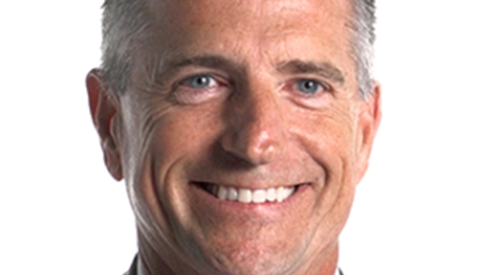David Kirkup: Captive Insurance Person of Interest

April 17, 2019

As part of our ongoing commitment to provide thoughtful commentary concerning issues impacting captives and the broader insurance markets, we spoke with David Kirkup, chief operating officer and chief financial officer for Captive Alternatives. Below is our in-depth conversation about the current state of affairs in the Puerto Rico captive domicile.
David, how did you become involved in the captive industry, and why captives?
In the early 1980s, I moved from London to take a job in Bermuda. Frankly, I was more interested in the beach and year-round sun than in insurance or captives. I joined Johnson & Higgins and managed a portfolio of big pharma captives, later managing internal control and then moving to New York to focus on the front end of the risk management process. Side note: I worked for Brian Hall, who apprenticed with Fred Reiss—the "father of captives"—which makes me the grandson of captives. Later, I held various financial and marketing roles in the US insurance world before coming back to the captive world in 2012. Since then, I've worked with midsize companies and their risk management needs at Captive Alternatives.
Many of our readers may not be familiar with Puerto Rico as a captive domicile, so could you provide a brief history of the domicile?
Puerto Rico emerged as a viable domicile quite late, which has given it the advantage of reviewing—and adopting in part—captive regulations in best-of-class locations. It then created an international banking and insurance sector that allowed companies more creative freedom while subject to robust regulation. As a US territory, the island is subject to US federal and banking laws and is a National Association of Insurance Commissioners (NAIC) member. The island has about $12 billion in domestic premium, so the department of insurance is highly experienced, and there is a critical mass of insurance specialists and associated professions. CapAlt moved all of our captive business to Puerto Rico in 2015 after a deep review of the relative pros and cons. Because it is a highly regulated US domicile with a responsive insurance department, we have been very pleased with our move.
What was the decision matrix that led Captive Alternatives to decide on opening an office in Puerto Rico?
We were looking for an efficient solution for creating and managing private insurance companies. While the regulatory capital requirement is one of the highest in the industry, we have actually made that a benefit for our clients. They completely understand that running a captive in Puerto Rico is a long-term and very serious risk management strategy. Operational costs are in line with other domiciles, but responsiveness from government is off the charts. Despite the occasional negative news—and opinions—about Puerto Rico, we see great things as the island makes the shift into financial services.
There are several unique features of Puerto Rico as a domicile, such as "dual sovereignty" and its membership in the NAIC. Can you provide some color commentary on these features and why they would be of interest to prospective captive owners?
Puerto Rico is a US territory, which means that all residents are US citizens—albeit nonvoters. It is governed by US federal and banking laws—there is even a Federal Bureau of Investigation office here. So, in many respects, the domicile is on a par with US state captive domiciles. Puerto Rico is also a full member of the NAIC and uniquely is also a member of the similar Latin American organization of insurance commissioners. Another unique feature is that Puerto Rico resident companies are taxed by the local tax authority rather than the Internal Revenue Service (IRS). As the full impact of some the "alternative minimum" taxes for large corporations like passive foreign investment company, Foreign Account Tax Compliance Act, and global intangible low-taxed income start to bite, Puerto Rico may also be well positioned to pick up business from Vermont and Bermuda.
How would you compare the Puerto Rico business and regulatory environments for captives to the United States? What similarities exist and what differences?
I would say they are very similar. Of course, Spanish is widely spoken, but English is common—especially in the professional arena. It is interesting that Puerto Rico adopted a three-to-one capital surplus model that I believe is one of the most robust requirements in the captive world. Efficiency in creating captives is also key, and we are able to create captives in weeks, not months, which is a significant factor in our growth curve. Puerto Rico is catching up fast with other jurisdictions, and most importantly, is willing to learn from experts and adapt to meet the needs of corporate risk management.
More specifically, perhaps you can tell our readers a bit about your private insurance company model and compare and contrast it with 831(b) captives in the United States.
While 831(b) captives are fully supported by Congress, with recent legislation increasing premium levels, it is increasingly clear that the IRS did not get the email! With more than 500 captives in Tax Court, we believe that any 831(b) captives going through an audit will likely lose their premium deduction—regardless of their actual structure. In contrast, after extensive research and consultation with tax and legal counsel, CapAlt created a different model in Puerto Rico. While our clients pay actuarially derived premiums to a licensed insurance company like many captive models, our reinsurance structure is a protected cell model with full quota share treaty risk distribution and subject to tax by the Puerto Rico tax authority. Thus, we have no involvement with the 831(b) model and actively differentiate our reinsurance model from the 831(b).
How do you see the role of captive managers evolving in the next 10 years? There has been discussion in the United States about trying to license captive managers; what are your thoughts on this?
Like many growing industries, consolidation and "professionalization" will inevitably occur. The intense IRS pressure on 831(b) models will start to bleed into the larger captive market, which will likely engage larger companies in renewed tax litigation. Recent Tax Court pronouncements are profoundly dispiriting to risk management professionals—it is clear that courts are sometimes making up their facts and have only passing familiarity with risk management concepts.
Thus, it is imperative that captive professionals seek to educate, train, and influence—to let the outside world know what risk management is actually about. Many professionals agree, and the Self-Insurance Institute of America (SIIA) recently developed a Captive Manager Code of Conduct, designed to ensure that captive managers observe high standards of ethical conduct. SIIA recognizes the captive as a premier risk management and financing tool and has issued these guidelines to advance these ethical and operational objectives.
At CapAlt, we have encouraged all our staff to take educational classes and we have three employees that recently completed the International Center for Captive Insurance Education (ICCIE) Associate in Captive Insurance designation program, with several more signed up. At the influencing level, we are active members of Captive Insurance Companies Association and SIIA, with management participation on several committees. We are pushing for all our clients to take up associate membership in captive bodies, we are a founding member of Puerto Rico's International Insurer Association, and we support SIIA's lobbying efforts in Washington.
Other developments further out might include licensing, but I believe a big factor will be to educate the IRS and Congress on the nature of risk management so that we can develop a clear path to a structure that works for all parties. The current regulatory situation is senseless and leads to a great deal of uncertainty. Ironically, the main reason for captives is the reduction of uncertainty!
As a corollary question to the one above, how do you see Captive Alternatives evolving over the next 10 years both in Puerto Rico and internationally?
We are excited about growth opportunities in the United States and internationally. The worldwide number of captives versus the number of companies shows how far we can grow. Now that we are based in Puerto Rico, we are starting to see more opportunities in Latin America and Asia. The benefits of Puerto Rico as a US launchpad are significant for international entities wishing to insure their risks while domiciling in a secure non-US mainland location. We also believe large US corporations will start to see the advantages of Puerto Rico over US states such as Vermont and expect early movers to begin explorations in 2019. Captive Alternatives will maintain and grow our presence in Puerto Rico—we are not purporting to be experts on all or even many domiciles—just Puerto Rico. This magnifies our efficiency contributing to growth that has made CapAlt an Inc. 5000 Company for 3 years running. As InsurTech and blockchain developments simplify international transactions, we may see the day when even households can pursue their own private insurance company. The future is bright.
Obviously, talent is a key component of any captive management company. How does Captive Alternatives attract new talent in Puerto Rico, and are you working with colleges on the island to promote risk management as a business opportunity?
There are many myths and mistaken notions about Puerto Rico—as perhaps befits a mythical island. We are getting very used to correcting misleading and sometimes malicious misinformation. The fact is that Puerto Rico has a $12 billion insurance industry and has many homegrown insurance experts in coverage, regulatory, legal, and tax areas. Colleges on the island have very good reputations, and many professionals have extensive US mainland experience as well. We have focused our efforts on working with and educating local companies on the benefits of risk management and financing and expect to see quite a few local captives. As we grow, we will certainly look for our people both in Puerto Rico and elsewhere to continue their risk management education, and we think the ICCIE qualifications are an excellent base.
Any closing thoughts on captives you'd like to leave with our readers?
Maybe it's time for a new name? While it would be difficult for the captive press to adapt, we much prefer the term "private insurance" as a way to describe this particular aspect of risk management. Whatever we call them, they are not going away. The industry needs to focus efforts on promoting the same risk management message. It's important that the 831(b)—or some variant—survives, and that some kind of rules-based structure comes back to that world. If we don't take care of the small companies, then they will lose that financing tool, and then the world—or at least the economy—will be a riskier and more uncertain place.
David, thanks for your time.
April 17, 2019


